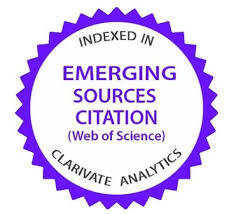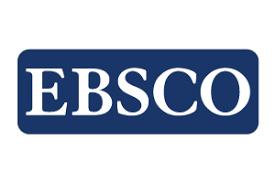Anthropological condiments for a theatrical scene myth, rite and shamanism in intercultural representation
Keywords:
etnografía, mapuche, interculturalidad, guion teatralAbstract
This article is the result of an investigation that aimed to collect contemporary versions of the Mapuche myth Kai Kai -Treng Treng with the intention of developing a theatrical script and its subsequent staging. The research, based on the ethnographic method, reflects on the contribution of anthropology and theater to contribute to the dissemination of indigenous cultural creations, taking into account the ethical responsibilities that intercultural representation implies. The cultural elements - myth, ritual and shamanism - that were taken into account to collect the information and build the theatrical script are described and analyzed anthropologically.
Downloads
References
Aguirre, B. Á. (1995). Etnografía. Metodología cualitativa en la investigación sociocultural. Barcelona: Boixareu Universitaria.
Ancalaf, C. (1992). Manual de cultura y lengua mapuche [en línea] https://trekaletuan.files.wordpress.com/2011/11/mapudugun-ankalaf.pdf [Consulta: 5/4/2015]
Barba, E. La canoa de papel. Tratado de Antropología teatral. México: Gaceta.
Barba, E. y Savarese, N. (1990). El arte secreto del actor. Diccionario de antropología teatral. México: Escenología.
Bonte, P. e Izard, M. (1991). Diccionario Akal de Etnología y Antropología. Madrid: Akal.
Curaqueo, D. (1989). “Creencias religiosas mapuches. Revisión crítica de interpretaciones vigentes”.
Revista Chilena de Antropología. Santiago, nº 8, p. 27-33.
Díaz, J. El Mito de “Treng-Treng Kaikai” del Pueblo Mapuche. Universidad Católica de Temuco [en línea] http://hdl.handle.net/10925/478 [Consulta: 14/4/2015].
Durkheim, É. (2012). Las formas elementales de la vida religiosa. México: Fondo de Cultura Económica, [1912].
Eliade, M. (2008). El mito del eterno retorno. Madrid: Alianza, [1972].
Faron, L. (1969). Los Mapuche. Su estructura social. México: Instituto Indigenista Interamericano, [1961]. Guber, R. (2001). La etnografía. Bogotá: Norma.
Hammesrsley, M. y Atkinson, P. (1994). Etnografía. Métodos de Investigación. Barcelona: Ediciones Paidos, [1983].
Harris, M. (1979). El desarrollo de la teoría antropológica. Una historia de las teorías de la cultura.. México: Siglo XXI.
Kuper, A. (1999). Cultura, la versión de los antropólogos. Barcelona: Paidós.
Lévi-Strauss, C. (1969). Las estructuras elementales del parentesco. Buenos Aires: Paidós, [1949].
(1986). El mito y el cuento. En Jáuregui, J. e Gourio, Y. (eds.). Palabras devueltas. México: SEP, INAH, IFAL, CEMCA.
Long, N. (1996). “Globalización y localización: Nuevos retos para la investigación rural”. En Grammont, H. y Tejera, H. Coords. La sociedad rural mexicana frente al nuevo milenio. México: INAH / UNAM / UAM / Plaza y Valdés.
Mege, P. (1997). La imaginación araucana. Santiago: LOM.
Tylor, E. (1974). “La ciencia de la cultura”. En Kahn, J. El concepto de cultura: textos fundamentales.
Barcelona: Anagrama, [1871], p 29-46
Turner, V. (1974). Dramas, Fields, and Metaphors: Symbolic Action in Human Society. Ithaca y Londres: Cornell University Press.
(1982). From Ritual to Theatre: The Human Seriousness of Play. Nueva York: Performing Arts Journal Publications.
(1980). La selva de los símbolos. México: Siglo XXI.
Wolf, E. (2000). Europa y la gente sin historia. Buenos Aires: Fondo de Cultura Económica, [1982].
Downloads
Published
How to Cite
Issue
Section
License
Copyright (c) 2017 Claudio Espinoza Araya

This work is licensed under a Creative Commons Attribution-NonCommercial 4.0 International License.
Usted es libre de:
- Compartir — copiar y redistribuir el material en cualquier medio o formato
- Adaptar — remezclar, transformar y construir a partir del material
- La licenciante no puede revocar estas libertades en tanto usted siga los términos de la licencia
Bajo los siguientes términos:
- Atribución — Usted debe dar crédito de manera adecuada , brindar un enlace a la licencia, e indicar si se han realizado cambios . Puede hacerlo en cualquier forma razonable, pero no de forma tal que sugiera que usted o su uso tienen el apoyo de la licenciante.
- NoComercial — Usted no puede hacer uso del material con propósitos comerciales .
- No hay restricciones adicionales — No puede aplicar términos legales ni medidas tecnológicas que restrinjan legalmente a otras a hacer cualquier uso permitido por la licencia.








